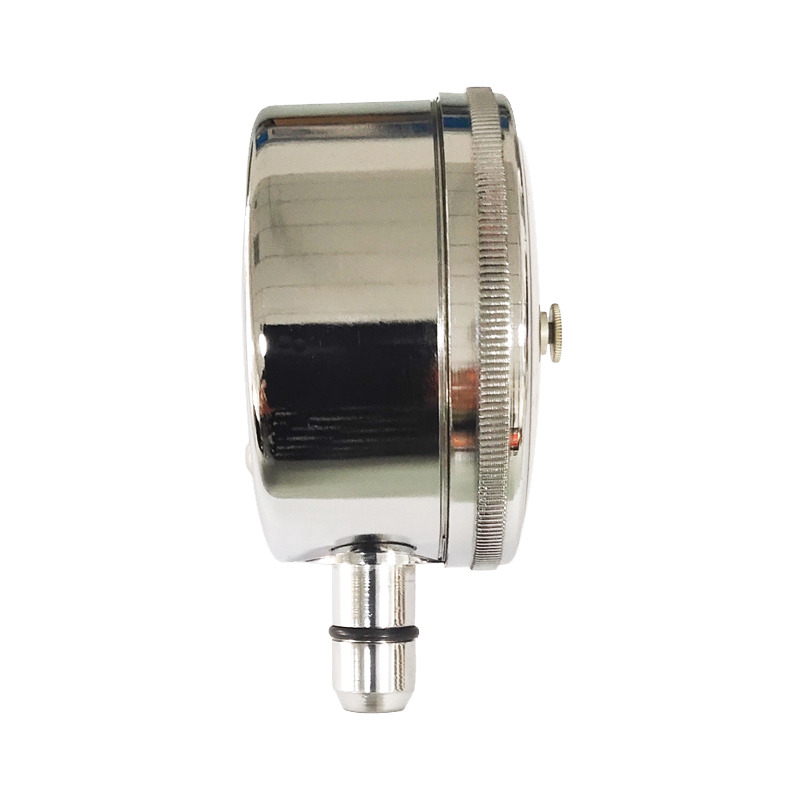
Dec . 05, 2024 08:00 Back to list
static pressure in differential pressure gauge quotes
Understanding Static Pressure in Differential Pressure Gauges
Differential pressure gauges are vital instruments used in various industrial applications to measure the difference in pressure between two points in a fluid system. One critical concept in understanding how these gauges work is static pressure. Static pressure is the pressure exerted by a fluid at rest or, more precisely, the pressure measured when the fluid is not in motion.
Static pressure plays a significant role in the operation of differential pressure gauges. These devices typically consist of two pressure ports one measuring the pressure at a specific location (often referred to as the high side) and the other measuring reference pressure (the low side). The ability to gauge the difference in these pressures allows for insights into flow rates, monitoring system performance, and even identifying potential blockages or leaks in the system.
In scenarios involving gas or liquid flow, static pressure provides an essential baseline. For instance, in HVAC systems, static pressure readings help in determining how air moves through ducts or filters. A differential pressure gauge can monitor variations caused by changes in fan speed, filter clogging, or variations in system design, allowing for effective performance management.
Static pressure is also fundamental in various industries, such as water treatment, chemical processing, and oil and gas production. In water treatment plants, for example, static pressure readings from differential pressure gauges can indicate when filters require maintenance or replacement. If the differential pressure reading exceeds a predetermined threshold, it usually signifies that the filter is becoming clogged and requires attention, ensuring uninterrupted operation within the system.
static pressure in differential pressure gauge quotes

Furthermore, in chemical processing, maintaining accurate static pressure is crucial for ensuring safety and efficiency. Chemicals often require precise pressure measurements to ensure control processes remain within safe operating limits. A differential pressure gauge that accurately reflects static pressure changes can prevent over-pressurization scenarios that may lead to hazardous situations.
Understanding static pressure is important in calibrating differential pressure gauges. Calibration ensures that the gauge provides accurate readings, which is essential for effective monitoring and control of processes. Over time, pressure sensors can drift, leading to inaccuracies in the readings. Regular calibration against known standards is necessary to ensure that the readings reflect actual static and differential pressures accurately.
Additionally, static pressure influences how differential pressure gauges are installed. Proper placement is crucial for obtaining reliable readings. If a gauge is installed in a location where flow disturbances can affect its readings, the data may not accurately represent the system's true performance.
In conclusion, static pressure in differential pressure gauges is a fundamental concept that significantly influences their functionality and reliability in industrial applications. Understanding how static pressure interacts with differential pressure enables better system monitoring and control, ultimately safeguarding operational efficiency and safety. Regular maintenance, calibration, and thoughtful installation practices further enhance the reliability of these gauges, allowing industries to operate smoothly while ensuring compliance with safety standards. It is evident that, despite being a simple measurement, static pressure plays a crucial role in maintaining the health of a wide range of industrial processes.
-
High-Precision 5 Valve Manifold Differential Pressure Gauge Suppliers
NewsApr.29,2025
-
High-Precision Diaphragm Vacuum Pressure Gauges Manufacturers & Quotes
NewsApr.29,2025
-
Omega Differential Pressure Gauges High Accuracy & Durability
NewsApr.28,2025
-
Low Pressure Differential Pressure Gauges Precision Solutions & Quotes
NewsApr.28,2025
-
Digital Diaphragm Pressure Gaauge Precision Measurement & OEM Quotes
NewsApr.28,2025
-
Differential Pressure Gauge China Price High-Accuracy & Best Quotes
NewsApr.28,2025
